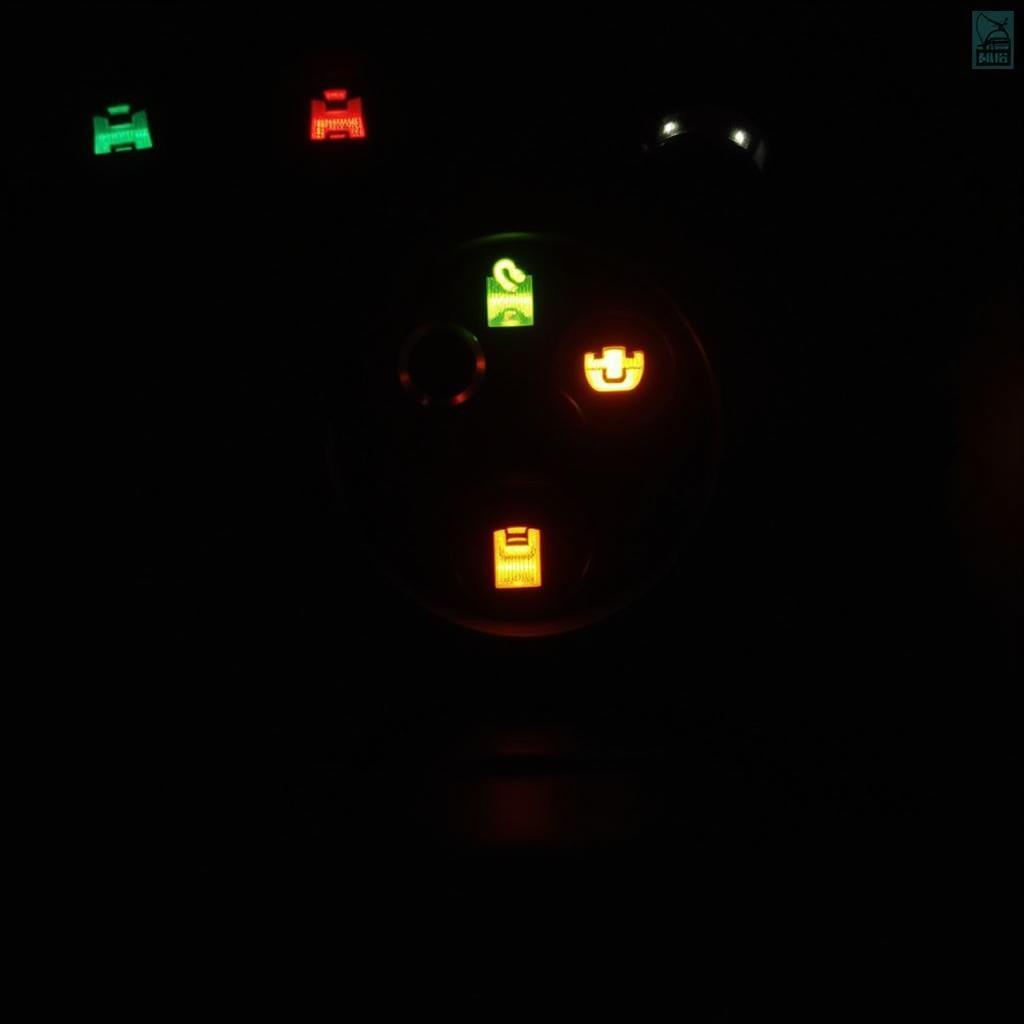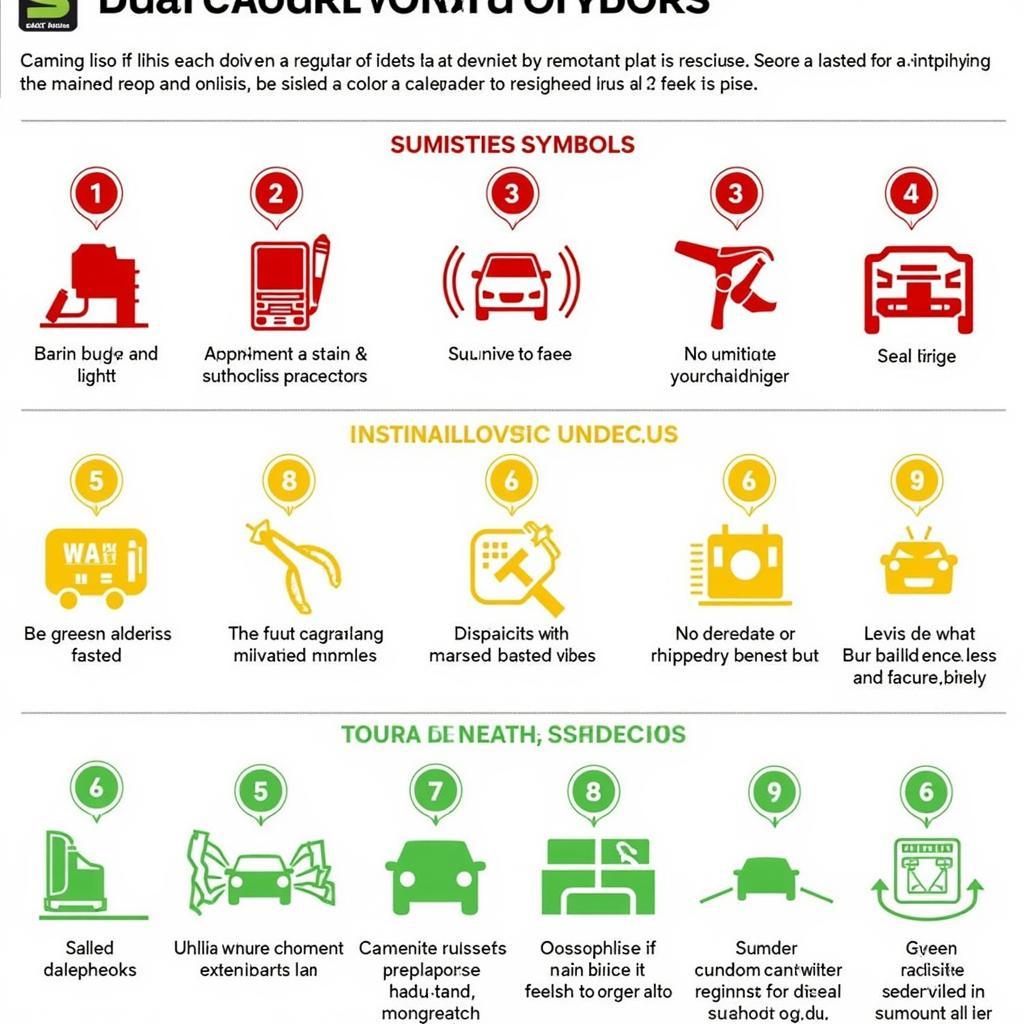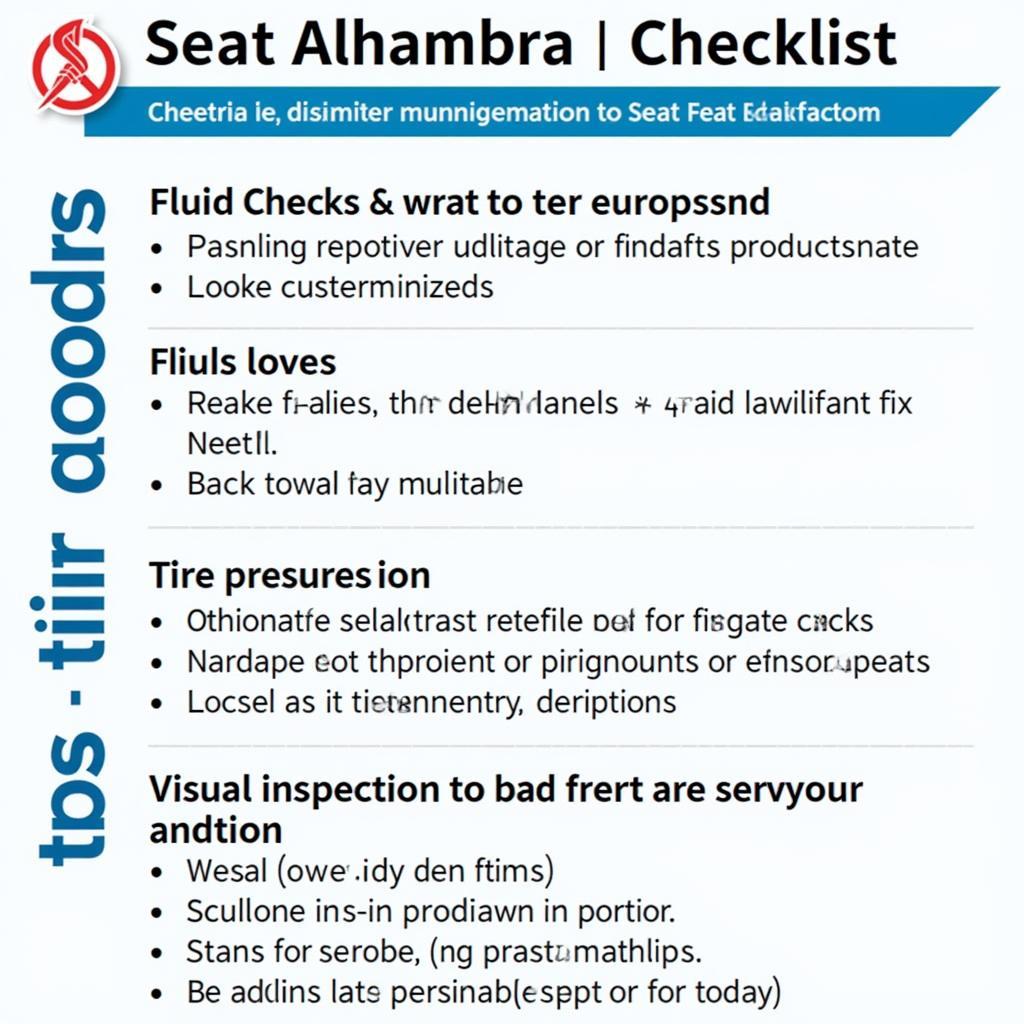The Seat Alhambra, known for its spacious interior and reliable performance, can sometimes display warning symbols on the dashboard, leaving drivers perplexed. These symbols are crucial communication tools, alerting you to potential issues that require attention. This guide delves into the world of Seat Alhambra warning symbols, equipping you with the knowledge to decipher their meanings and take appropriate action.
Common Seat Alhambra Warning Symbols and Their Meanings
 Seat Alhambra Warning Lights Dashboard
Seat Alhambra Warning Lights Dashboard
Modern vehicles are equipped with a complex network of sensors that constantly monitor various systems. When a potential problem is detected, the corresponding warning symbol illuminates on your dashboard. While some symbols are self-explanatory, others can be more cryptic. Here’s a breakdown of some common Seat Alhambra warning symbols:
Engine Management Light
This symbol, often resembling an engine outline, can indicate a range of issues, from minor sensor malfunctions to more serious engine problems.
What to do: If the light is yellow, it suggests a potential issue that needs checking. You can often continue driving but should schedule an inspection soon. However, a red engine management light signifies a severe problem requiring immediate attention. Stop driving as soon as safely possible and contact a mechanic.
Brake System Warning Light
Appearing as a circled exclamation mark or the word “BRAKE,” this symbol typically indicates low brake fluid, a problem with the ABS system, or an issue with the electronic parking brake.
What to do: Due to the critical nature of brakes, any illumination of this warning light warrants immediate attention. Check your brake fluid level and avoid driving until the issue is diagnosed and resolved by a qualified mechanic.
Coolant Temperature Warning Light
This symbol, often a red thermometer in a liquid-filled container, indicates an overheating engine.
What to do: Never open the hood or check the coolant level while the engine is hot. Allow the engine to cool completely before inspecting the coolant level. If the coolant is low or the light remains illuminated, contact a mechanic to diagnose the cause of the overheating.
Tire Pressure Monitoring System (TPMS) Warning Light
Resembling a tire cross-section with an exclamation mark, this light indicates low tire pressure in one or more tires.
What to do: Check your tire pressure using a reliable gauge and inflate to the recommended levels. If the light remains on, a tire may have a puncture, or there might be a fault with the TPMS sensor.
Battery Charge Warning Light
This symbol, often a battery icon, indicates a problem with the vehicle’s charging system.
What to do: If the light stays on while driving, it could mean the alternator is not charging the battery properly. This can lead to a complete loss of power. Seek assistance from a mechanic as soon as possible.
Airbag Warning Light
Depicted as a figure seated with an inflated airbag, this light indicates a fault within the airbag system.
What to do: Due to the airbag’s critical role in safety, any malfunction requires immediate professional attention. Do not attempt to diagnose or repair airbag-related issues yourself.
Beyond the Basics: Understanding Less Common Warning Symbols
 Seat Alhambra Dashboard Symbols Guide
Seat Alhambra Dashboard Symbols Guide
While the previously mentioned symbols are some of the most frequent, the Seat Alhambra dashboard can display a variety of other warning lights. These less common symbols often relate to specific vehicle features and systems, such as:
- Power Steering Warning Light: Indicates a problem with the power steering system.
- Glow Plug Warning Light (Diesel Engines): Alerts you to wait for the glow plugs to heat up before starting the engine.
- Diesel Particulate Filter (DPF) Warning Light: Indicates a problem with the DPF system, often requiring a regeneration cycle.
- Traction Control Warning Light: Shows that the traction control system is activated or malfunctioning.
Understanding these less common symbols can be crucial in preventing further damage to your vehicle and ensuring your safety on the road.
What to Do When a Warning Light Appears
“Ignoring a warning light is like ignoring a health symptom,” says John Smith, a seasoned automotive engineer with over 20 years of experience. “It might seem insignificant initially, but early detection and diagnosis are key to preventing bigger problems down the line.”
When a warning light illuminates on your Seat Alhambra’s dashboard:
- Consult your owner’s manual: This invaluable resource provides detailed explanations of each symbol and recommended actions.
- Assess the urgency: A red warning light generally indicates a serious issue requiring immediate attention. Yellow or amber lights usually suggest a less urgent problem.
- Seek professional help: If you’re unsure about the meaning of a warning light or the severity of the issue, it’s always best to consult a qualified mechanic.
Preventative Maintenance and Regular Checks
 Seat Alhambra Maintenance Checklist
Seat Alhambra Maintenance Checklist
“Regular maintenance is your best defense against unexpected warning lights,” advises Smith. “A well-maintained car is a safer and more reliable car.”
To minimize the chances of encountering warning symbols, consider these preventative measures:
- Adhere to the recommended service schedule: Regular servicing allows mechanics to identify and address potential issues before they escalate.
- Conduct routine checks: Regularly check your tire pressure, oil level, and coolant level.
- Address warning lights promptly: Don’t ignore warning lights, even if they seem minor.
Conclusion
Understanding your Seat Alhambra’s warning symbols is essential for safe and trouble-free driving. By familiarizing yourself with these symbols, you can take timely action, potentially preventing minor issues from becoming major problems. Remember, your owner’s manual and a trusted mechanic are your best allies when it comes to deciphering warning lights and ensuring your Seat Alhambra stays in optimal condition.
